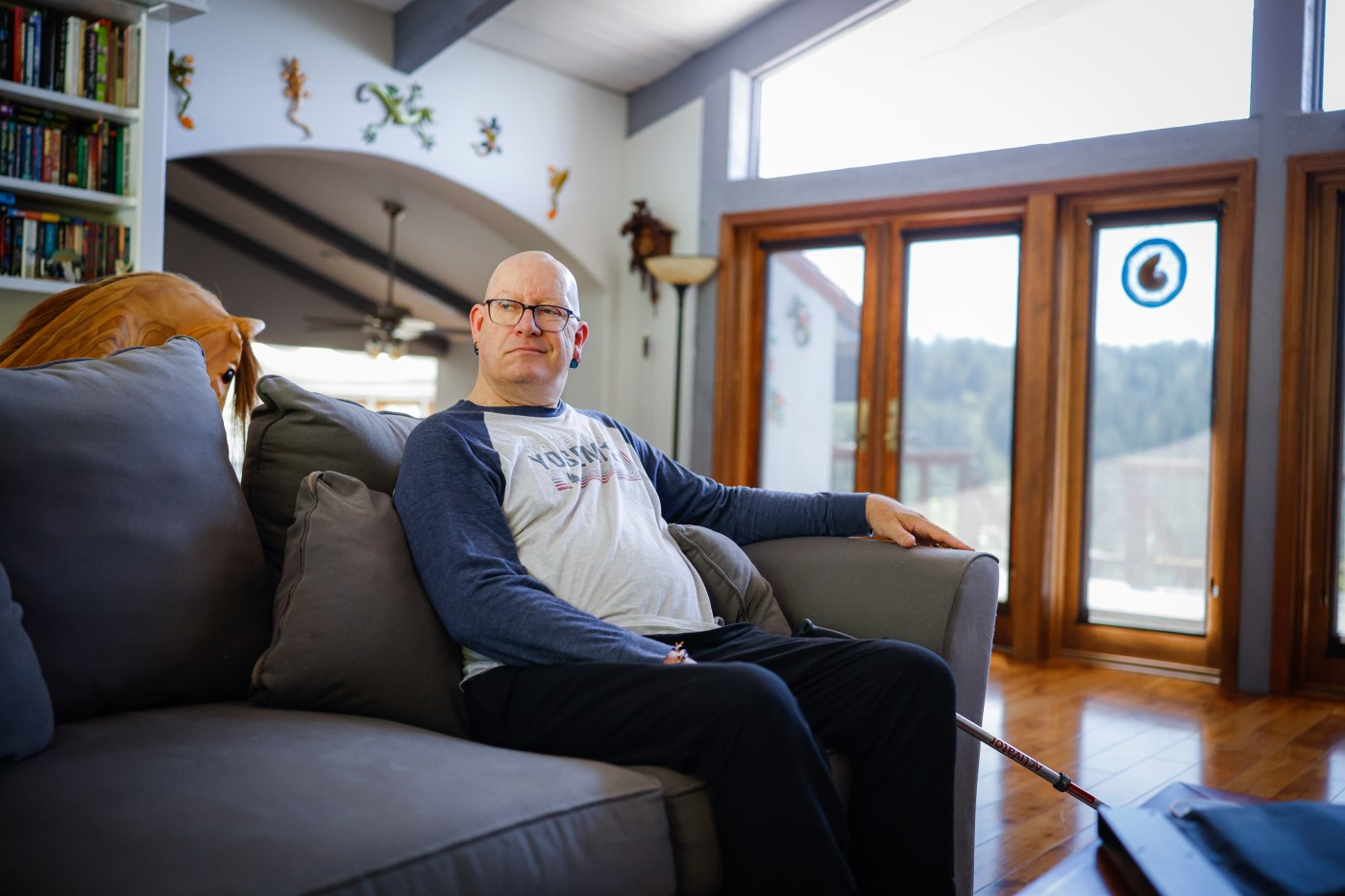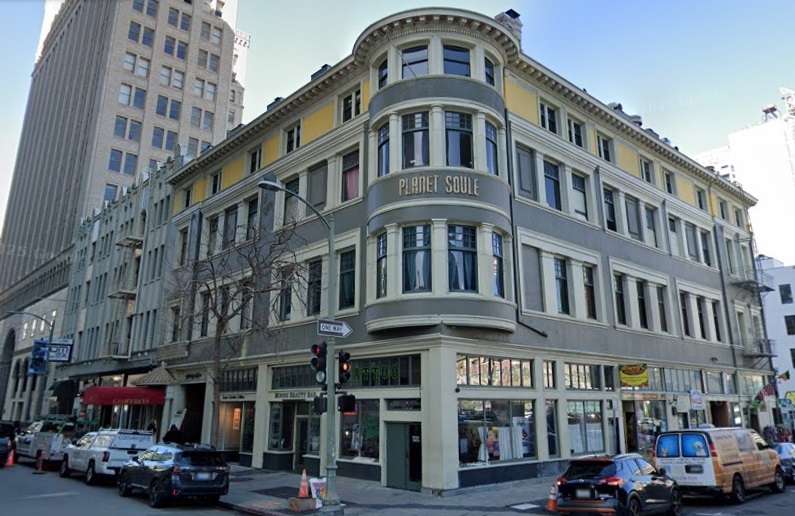When Chris Wilder had a massive stroke four years ago, doctors told his wife that he might not survive — and if he did, he might not ever walk or talk again.
Related Articles
California, Oregon and Washington governors form public health alliance in rebuke of Trump administration
Florida plans to become first state to eliminate all childhood vaccine mandates
Doctor: Housekeeper arrested by ICE was ‘catatonic’ the day she was discharged
Cardi B wins case filed by California security guard who claimed rapper assaulted her
American kids are less likely to reach adulthood than foreign peers
The former Valley Health Foundation executive director, then 53, had been rushed from his home in the Santa Cruz Mountains to Good Samaritan Hospital after Kate Wilder noticed her husband’s face slump — a sign of a stroke. As Wilder’s brain swelled, doctor’s removed a large section of his skull and subsequently his left temporal lobe — a key part of the brain responsible for communication.
Once he was stable, Wilder was transferred to Valley Medical Center — Santa Clara County’s flagship public hospital with a nationally ranked rehabilitation center — where he spent the next six months relearning how to stand and teaching his brain to reconnect with the right side of his body.
In a recent interview at his home, Wilder, who now walks with a cane, described the last several years as frustration, pain and a lot of hard work and physical therapy. He credits Valley Medical Center, which he long thought of as “my hospital,” and the county’s health care system, which he helped raise more than $100 million to support, for putting him back together.
“I wouldn’t be here without them,” he said.
But without an influx of funding from a sales tax measure on November’s ballot, Santa Clara County officials say the health care services that saved Wilder’s life could be at risk.
President Donald Trump’s “Big, Beautiful Bill,” which he signed into law on July 4, will hack a trillion dollars from Medicaid over the next decade, delivering a financial blow to “safety net” hospitals that rely heavily on funding from federal and state health care reimbursements.
In Santa Clara County, more than 50% of the Santa Clara Valley Healthcare system’s revenues come from Medi-Cal — California’s Medicaid program for low-income and disabled residents.
“These cuts are potentially life-changing for way too many people in our community because our county hospital serves most people in the county at one time or the other whether they are expected to or not,” Wilder said.
County officials estimate that Trump’s cuts will lead to $4.4 billion in lost revenue through the 2029-2030 fiscal year, impacting funding for health care and social services in an ecosystem that has already been strapped in recent years.
The Board of Supervisors last month unanimously approved putting the sales tax measure, known as Measure A, in front of voters this November, giving county officials less than three months to make their case.
“We have difficult decisions to make whether it passes or not, but the magnitude of what those looks like will be radically shaped by whether the measure passes,” County Executive James Williams told the Bay Area News Group.
The sales tax increase, which would sunset after five years, is expected to generate $330 million annually — roughly a third of the funding gap the county needs to close. Williams said the county is also seeking support from the state, noting “public hospitals are the backbone for health care for all Californians.”
While public hospitals make up only 6% of hospitals in the state, they operate more than 50% of trauma and burn centers, according to the California Health Care Safety Net Institute.
Across the Bay Area, public hospitals are grappling with fiscal uncertainty as a result of cuts to Medicaid. In the East Bay, the Alameda Health System is considering what CEO James Jackson called the “nuclear option” for its future budget as 70-80% of its funding comes from federal and state health care reimbursements. Santa Clara County, though, is the only Bay Area county currently considering a sales tax measure in November to plug some of the hole.
It wasn’t until 2003 that cities and counties were given the power to increase sales taxes with voter approval. Since then it’s become an increasingly popular tool for locales looking to stave off budgetary disaster.
In 2020, Alameda County voters approved a one-half percent general sales tax increase largely to address homelessness, though federal cuts have forced the county to divert some of that money to protect safety net services. Oakland passed its own sales tax increase in April to help its looming budget deficit, and Pleasanton is expected to make another attempt at a sales tax measure in 2026 after voters rejected it last November.
In Santa Clara County, opposition to Measure A has already started to materialize. A group of local Libertarian voters quickly filed a lawsuit attempting to block the initiative from the ballot. They accused the county of violating the state constitution by improperly declaring an emergency to rush the tax increase to the voters during a special election. But a judge last week affirmed the county was well within its right to do so.
Mark Hinkle, president of the Silicon Valley Taxpayers Association, said that he’s concerned about how the county will use the money generated by the sales tax since it is slated to go to the general fund.
“They could spend 100% of that money on salaries, pensions, roadwork, who knows,” he told the Bay Area News Group.
A coalition of current and former elected officials — including Cupertino Mayor Liang Chao, former Saratoga City Councilmember Rushi Kumar and former Assemblymember Kansen Chu — signed onto the official argument against the ballot measure, describing it as a “blank check with no oversight or accountability” and said the increase “hits hardworking families the hardest.”
The local sales tax rate is currently 9.125% countywide, and the 0.625% increase would put Campbell, Milpitas and San Jose at a 10% sales tax rate or higher.
Michael Elliot, executive director of the Valley Health Foundation who took over when Wilder stepped down in 2022 following his stroke, said the county has “one shot at avoiding what will be a genuine public safety emergency.”
The Save Our Local Hospitals — Yes on Measure A campaign, which Elliot is helping lead, has amassed the endorsements of more than 70 current and former elected officials and a campaign war chest of nearly $650,000. The Valley Physicians Group and the Valley Health Foundation are two of its largest donors.
“We’re not going to just sit on our hands and watch essential services close that we fought so hard to preserve in previous years,” Elliot told the Bay Area News Group.
The Valley Health Foundation executive said the cuts to Medicaid won’t just hurt the one in four Santa Clara County residents who rely on it for health coverage, but instead, it will impact anyone seeking emergency or trauma services.
Valley Medical Center is one of two Level I trauma centers in the county that provide care to the most critical patients. It’s also the only dual trauma center and certified burn center in the entire Bay Area. County officials say these are the types of services at risk with the revenue losses from Medicaid. Any cuts the county has to make, could also strain the surrounding health care system if patients are forced to go elsewhere, overwhelming other emergency rooms and clinics.
“Sooner or later, you or someone that you love will need our services,” Elliot said. “We want to make sure that those services are open and ready and there is a real question if we’re going to be able to keep doing that. That’s what Measure A is about: that we have a baseline of services to protect the health and safety of every Santa Clara County resident.”





